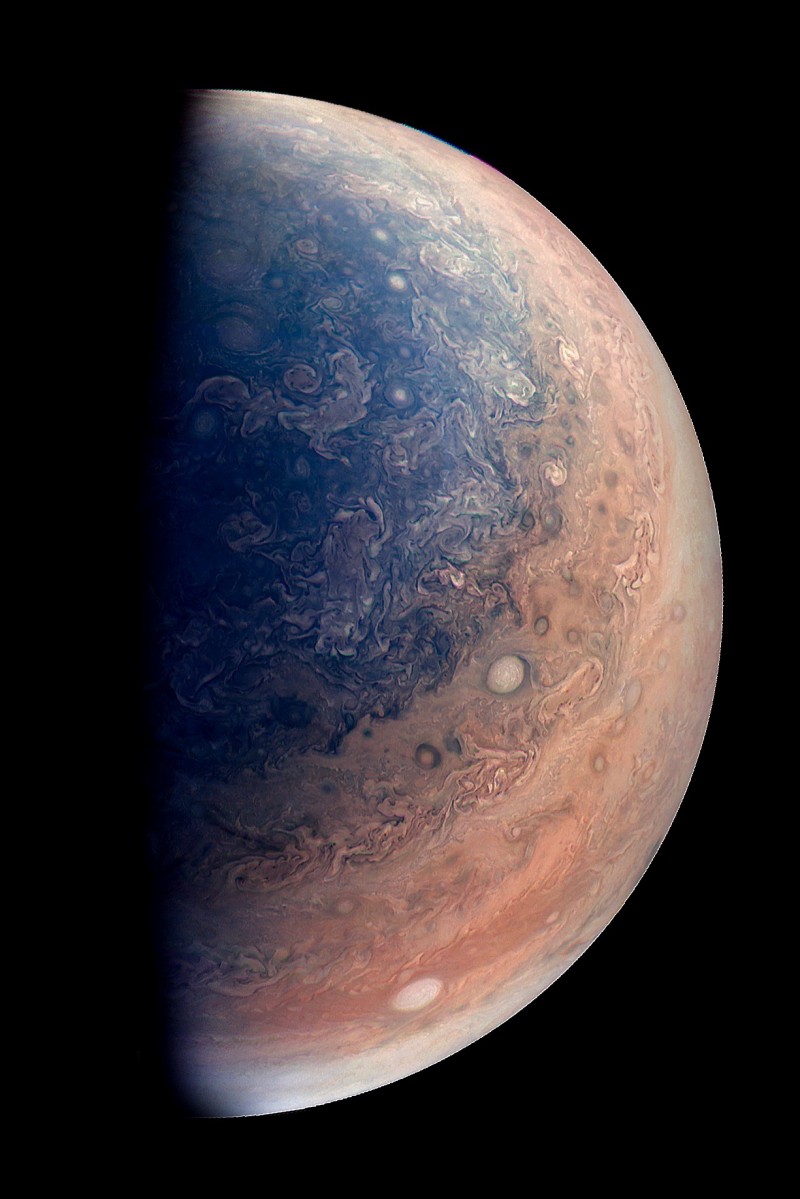
Jupiter may not always have been a big ball of hydrogen and helium.
A new study suggests that, in their youth, Jupiter and other gas-giant planets may have been "steam worlds" — warm ocean planets a bit bigger than Earth, with water-vapor atmospheres.
John Chambers, a researcher at the Carnegie Institution for Science in Washington, D.C., proposes that some protoplanets may grow into steam worlds from their modest beginnings as accretions of rock and ice pebbles. [Gallery: The Strangest Alien Planets]
As the accreting bodies come together and the protoplanet grows, increasing pressure liquefies the ices, and oceans form. Without any air present, water and any other liquids sublimate, creating an atmosphere dominated by water vapor, the idea goes. Even a relatively small protoplanet of between 0.08 and 0.16 Earth masses can be quite warm — from 32 to 704 degrees Fahrenheit (0 to 347 degrees Celsius), Chambers said.
"I calculated the structure of atmospheres in this case, and worked out when conditions are right for rapid inflow of gas to form a giant planet," Chambers told Space.com. "The answer is, this happens when a planet is a few Earth masses, which is somewhat lower than the conventional value of 10 Earth masses."
In his model, Chambers started with a planet that orbits a sun-like star about three times farther away than Earth circles the sun. The makeup of the initial protoplanet is half ice and half rock. The pebbles accrete into a small protoplanet, whose atmosphere is very thin and made up of sublimating ices. Once the protoplanet hits 0.084 Earth masses, there's enough atmospheric pressure for ice to melt, and the object becomes a small ocean world. As more ice and rock accrete, the protoplanet gets bigger and starts to accumulate hydrogen and helium.
Since there's a lot of water in the atmosphere, the planet gets warmer. (Water is a powerful greenhouse gas.) As the protoplanet gains mass, the atmospheric pressure also keeps rising, allowing the atmosphere to absorb more water vapor. Eventually the pressure gets so high that the water is no longer an ocean of liquid but a "supercritical fluid" mixed with hydrogen and helium, with no clear boundary between the atmosphere and the surface.
Once about two to five Earth masses of rock and ice come together, a runaway process starts, and the protoplanet picks up more gas from the disk around its host star quickly. That's what allows a gas giant to grow, according to the new study.
Most models of planet formation assume that planetesimals — the bits that accrete to form planets — are roughly kilometer-size bodies. Pebble accretion, on the other hand, assumes that the accreting objects are, as the name implies, the size of pebbles.
Michiel Lambrechts, a researcher at Lund University in Sweden who was not involved in Chambers' study, said the scheme is a logical one.
"It's all about some physics that is very plausible," Lambrechts said.
Whether this scenario applies to Jupiter is not known, though there is some data from NASA's Jupiter-orbiting Juno mission that seems to show a core that's more diffuse than scientists initially thought. One implication is that, if Chambers and others are correct about the pebble-accretion model, one would expect to find that Jupiter's core harbors only a few Earth masses, Lambrechts said.
Planetary scientists generally think that gas giants must pick up most of their mass in just a few million years, because the solar wind from a newborn star blows away most of the gas in its protoplanetary disk quickly.
That fast timeline can cause problems for some planet-formation models. But it suits the pebble-accretion idea just fine, Chambers said.
"At a certain point, it's about how you avoid accreting quickly," he said.
Chambers said the next step is to look at more exoplanet data.
"I'm still working through the implications of this, but the next step is to feed this result into more general models for planet formation," he said. "The idea is to compare the outcome of these models with the observed population of extrasolar planets to pin down other unknown factors in planet formation."
Source : Jesse Emspak